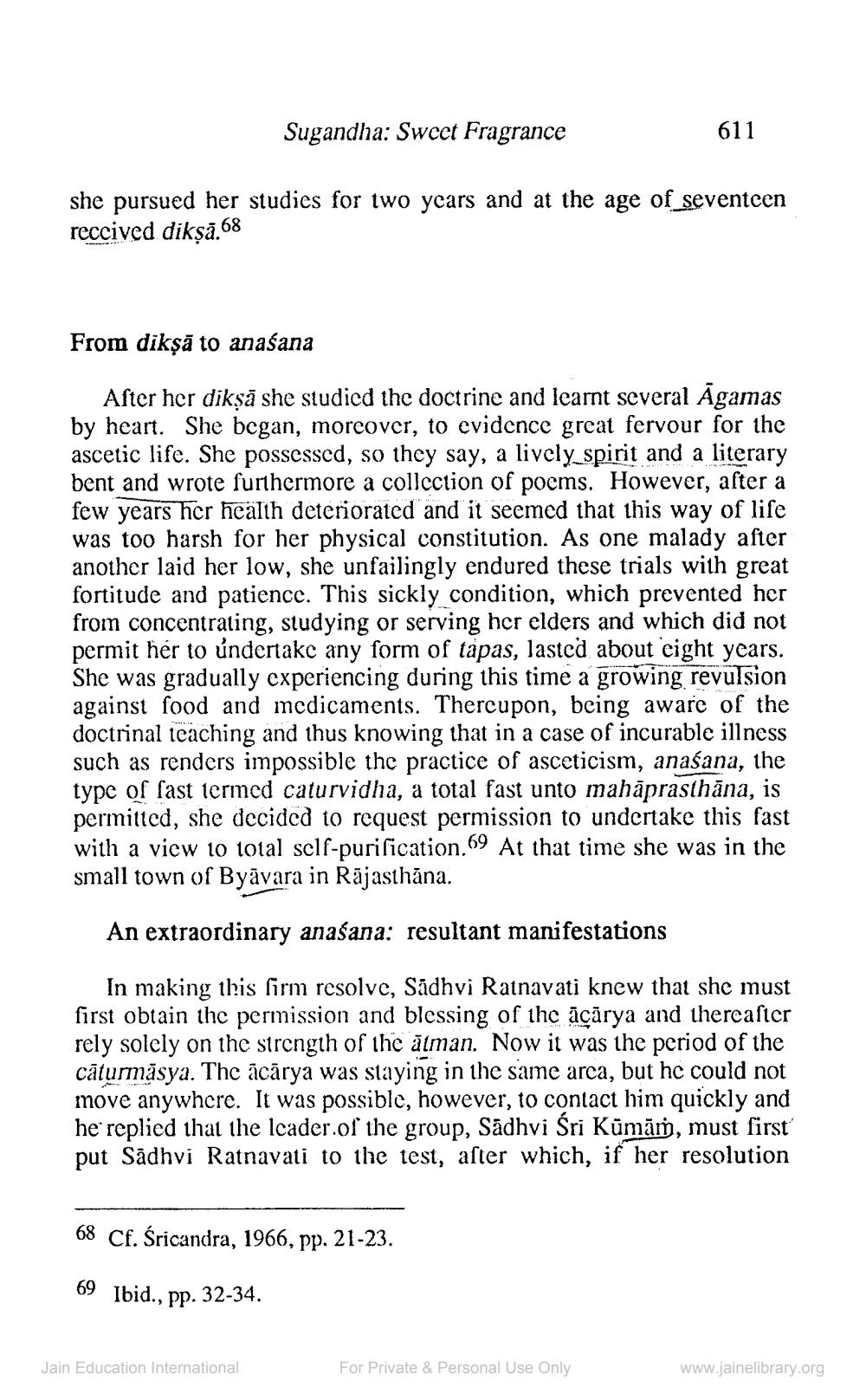________________
Sugandha: Sweet Fragrance
611
she pursued her studies for two years and at the age of_seventeen reccived dikṣā.68
From dikşā to anaśana
After her dikşā she studied the doctrine and learnt several Agamas by heart. She began, moreover, to evidence great fervour for the ascetic life. She possessed, so they say, a lively spirit and a literary bent and wrote furthermore a collection of poems. However, after a few years her health deteriorated and it seemed that this way of life was too harsh for her physical constitution. As one malady after another laid her low, she unfailingly endured these trials with great fortitude and patience. This sickly condition, which prevented her from concentrating, studying or serving her elders and which did not permit her to undertake any form of tapas, lasted about eight years. She was gradually experiencing during this time a growing revulsion against food and medicaments. Thereupon, being aware of the doctrinal teaching and thus knowing that in a case of incurable illness such as renders impossible the practice of asceticism, anaśana, the type of sast termed caturvidha, a total fast unto mahāprasthāna, is permitted, she decided to request permission to undertake this fast with a view 10 total self-purification.69 At that time she was in the small town of Byāvara in Rājasthāna.
An extraordinary anaśana: resultant manifestations
In making this Girm resolve, Sadhvi Ratnavati knew that she must first obtain the permission and blessing of thc ācārya and thercaster rely solely on the strength of the atman. Now it was the period of the cāturmāsya. The acārya was staying in the same arca, but he could not move anywhere. It was possible, however, to contact him quickly and he replied that the Icader of the group, Sadhvi Sri Kūmām, must first put Sadhvi Ratnavati to the test, after which, if her resolution
68 Cf. Śricandra, 1966, pp. 21-23.
69 Ibid., pp. 32-34.
Jain Education International
For Private & Personal Use Only
www.jainelibrary.org




